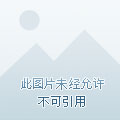In the British Museum in the United Kingdom, there is a collection of incomplete ancient Egyptian stone tablets, although its appearance is not proud, but it is the treasure of the town museum that the United Kingdom focuses on protecting.
The name of this stone tablet is
"Rosetta Stone".

In August 1799, during Napoleon's expedition to Egypt, he accidentally excavated a fragment of a black basalt stele in the village of Rashid in the Nile Delta, which was inscribed with three strange words, and Napoleon ordered the stele to be transported to Cairo for scholars to study, but because no one interpreted it, the contents of the stele could not be known.
In 1801, the French army was defeated by the British army, according to the agreement, the French unconditionally handed over all cultural relics, including the Rosetta Stone, to the British, and since then, this ancient Egyptian stone tablet has become a British trophy and is collected by the British Museum.
At that time, a British scholar named Stephen Weston discovered that the text at the bottom of the stele was ancient Greek, and he first translated the ancient Greek into English, so that the world could understand what was written on the stele.
It turns out that this stele is BC
In 198, egyptian sacrifices were written for the 13-year-old Pharaoh Ptolemy V, who repaired the temple after his succession and reduced the tax arrears of the temple, so that the priests of ancient Egypt laid this obelis on the first anniversary of his accession to the throne in gratitude to the pharaoh for his kindness.
Since the Ptolemaic dynasty was a foreign dynasty established by the ancient Greeks, the documents at that time were often written in three languages: the ancient Greek script used by the royal family, the sacred script used by the gods (hieroglyphs), and the secular script used by the commoners (cursive), and since the stone stele is ancient Greek, there is no doubt that the inscription above the stele is an ancient Egyptian script with exactly the same content.
As we all know, the ancient Egyptian hieroglyphs have been lost for more than a thousand years, no one can interpret them, but the ancient Egyptian cultural relics are using hieroglyphs, and now digging out such a stone stele with ancient Greek contrasts will help archaeologists decipher the laws of ancient Egyptian scripts to reinterpret this long-lost script.
However, due to the limited writing on the Rosetta Stone, and the most critical part of the carved hieroglyph is still missing, from 1802 onwards, many well-known scholars in the West, such as Britain, Germany, and Italy, have tried to decipher the mystery of the Rosetta Stone, but unfortunately have not made substantial progress.
until
In 1822, a linguistic genius emerged.
This man was the French historian and linguist Jean
- François Chamborhyan. Born in 1790 in a French bookseller's family, Champerian developed a keen interest in linguistics from an early age, and by the age of 16 he was proficient in Latin, Ancient Greek and Chinese.
And Chinese characters are precisely the only writing system in the history of human civilization that has continued from hieroglyphs to the present day and has not been lost. Therefore, when Shang Bolian got the Rosetta Stone Tablet, he found that there was some commonality between the ancient Egyptian script and the Chinese phonetic characters, that is, some of the ancient Egyptian hieroglyphs were not used for ideography, but for phonetics.
For example:
The "spider" character is a partial initial "Zhu" that is both a depiction of the shape of the spider and a pronunciation, which is completely different from the European language system, so European scholars have deciphered egyptian hieroglyphs for 20 years and have not been able to penetrate the mysteries.
Because Shang Bolian was proficient in Chinese, he applied this feature of Chinese characters to ancient Egyptian scripts, successfully deciphered the Rosetta Stone, and compiled a comparison table of ancient Egyptian hieroglyphs and ancient Greek. This comparison table has also become an important tool for Western scholars to study and interpret the text on ancient Egyptian murals and stone tablets.
This incident of Champollion's deciphering of ancient Egyptian scripts was hailed as a sign of the birth of Egyptology, and Chambollion himself was also known
"The Father of Egyptology". The term "Rosetta" has also become the name of a European comet probe, implying the creation of human history.